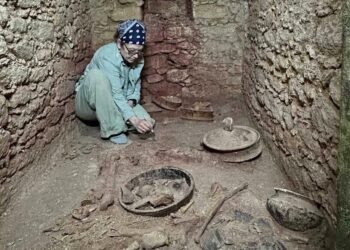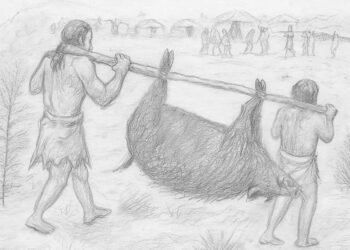Archaeologists, in collaboration with the Museum of Vojvodina in Novi Sad (Serbia), the National Museum Zrenjanin, and the National Museum Pančevo, have unearthed a previously unknown Late Neolithic settlement near the Tamiš River in Northeast Serbia. This finding represents one of the few large Late Neolithic settlements identified in the Serbian Banat region.

Situated near the modern village of Jarkovac in Vojvodina, the settlement spans an area of 11 to 13 hectares and is encircled by four to six ditches. Through advanced geophysical methods employed in March of this year, the team was able to meticulously map the extent of the site.
ROOTS doctoral student and co-team leader Fynn Wilkes, said: “A settlement of this size is spectacular. The geophysical data also gives us a clear idea of the structure of the site 7,000 years ago.”
Analysis of surface materials collected from the vicinity suggests that the settlement belonged to the Vinča culture, dating back to 5400-4400 BCE. Notably, traces of the regional Banat culture are also evident, indicating a complex interplay of cultural influences in the area.

In addition to their discoveries in Serbia, the research team explored Late Neolithic circular features, known as “rondels,” in Hungary, in collaboration with partners from the Janus Pannonius Museum in Pécs. These features are associated with the Lengyel culture, dating from 5000/4900 to 4500/4400 BCE.
By combining geophysical technologies with systematic surveys, the team refined the dating of these sites, leading to the re-evaluation of previously known structures. Notably, a settlement initially attributed to the Late Neolithic period was reclassified as likely belonging to the Late Copper Age and Early Bronze Age Vučedol culture.
Professor Martin Furholt underscored the significance of Southeast Europe in tracing the diffusion of knowledge and technologies during early human history, particularly in metalworking.
The ongoing analyses of these discoveries are integral to the interdisciplinary project “Inequality of Wealth and Knowledge” of the ROOTS Cluster of Excellence, aiming to deepen our understanding of these historical processes.






















